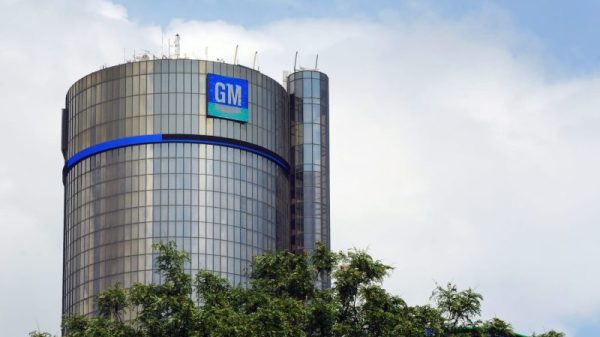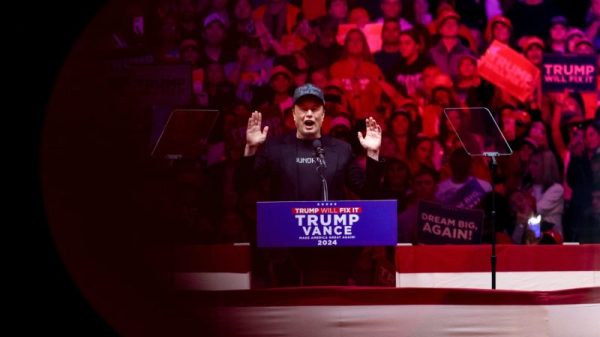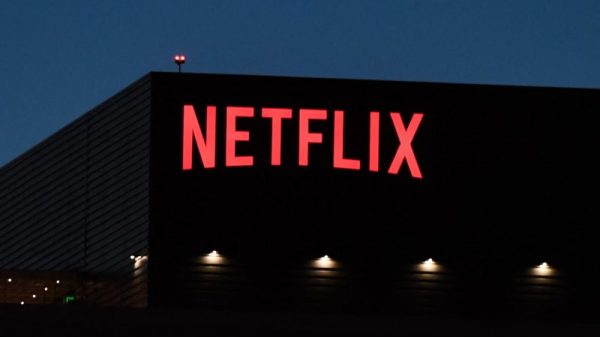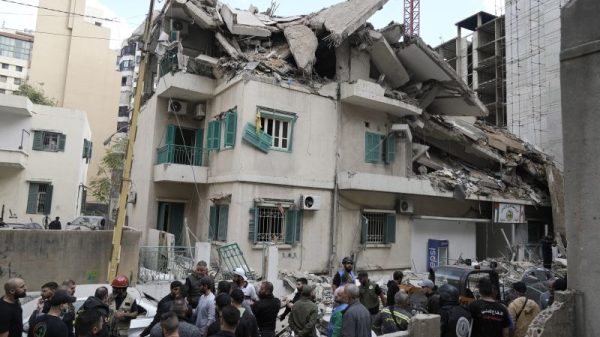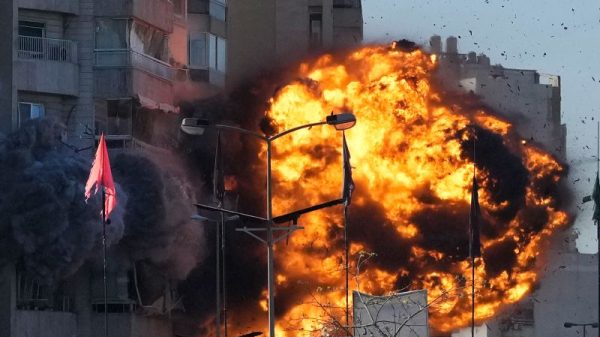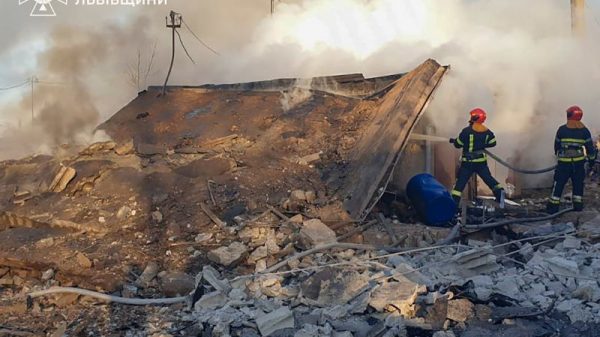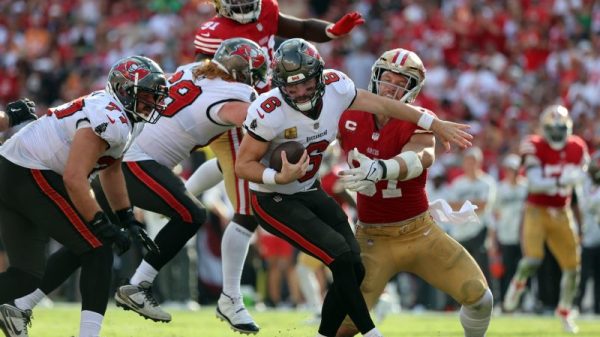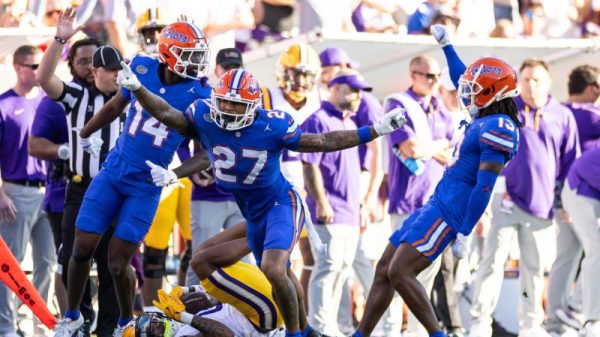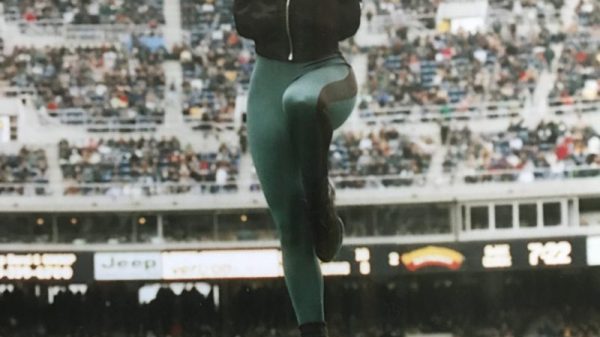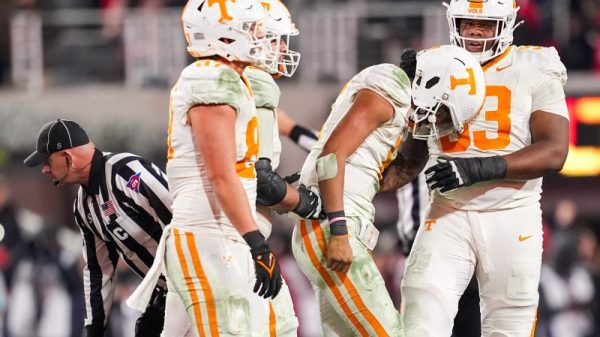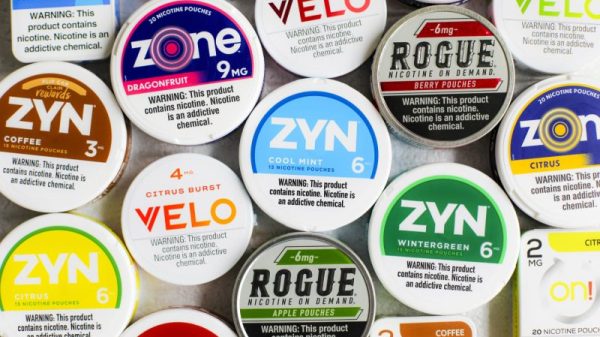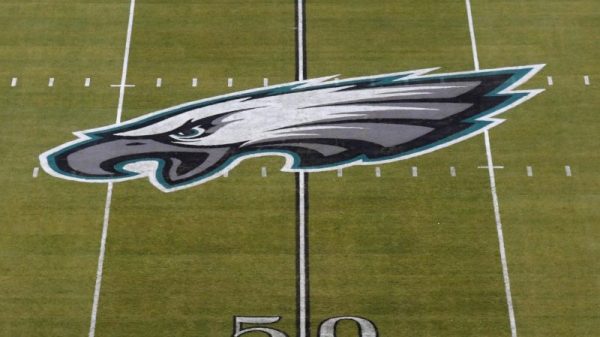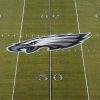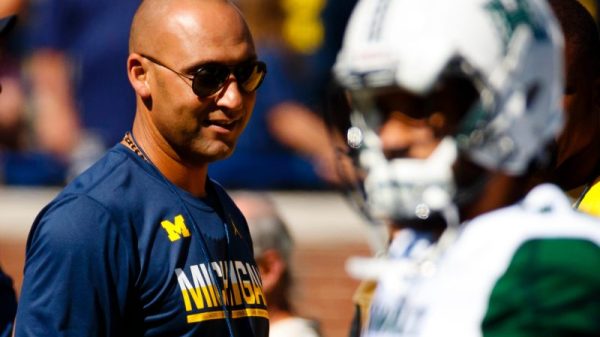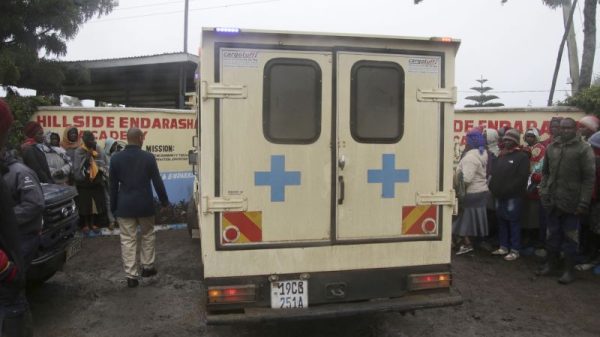Among the distinctive visuals provided by every NFL game are the venue-specific ones – stadiums adding their own colors, backdrops and quirks that provide unique layers to football environments that fans have (generally) come to appreciate in person and/or on platforms like EA Sports’ signature “Madden NFL” video game.
The arrival of Week 5 means the start of this year’s International Series – London’s Tottenham Hotspur Stadium the host for Sunday morning’s meeting of the New York Jets and Minnesota Vikings. It will be the second foreign facility employed this year after Corinthians Arena in São Paulo, Brazil, became the 100th different stadium used to stage a regular-season game during the Super Bowl era (since 1966).
As for the more familiar facilities that football fans could reasonably road trip to? With autumn now in full swing, it seemed as good a time as any to assess and rank, with the help of our league experts who have paid frequent visits to them, all 30 regularly used NFL stadiums.
(Notes: Six USA TODAY Sports writers who regularly cover the NFL were polled in order to achieve a collective staff ranking. Club win-loss records in respective stadiums are through the 2023 season and include playoffs.)
1. Lumen Field – Seattle Seahawks
Year opened: 2002
NFL STATS CENTRAL: The latest NFL scores, schedules, odds, stats and more.
Capacity: 68,740
Surface: FieldTurf
Seahawks’ record there: 129-60
Super Bowls hosted: 0
“It’s a retroactive crime that the team and its rabid 12s were stuck in the concrete Kingdome for nearly a quarter-century – though maybe they got even by propagating the wave throughout the sporting world. Moving on. Lumen Field’s gorgeous architecture, reverberating cacophony when the Seahawks are good (it redirects off the cantilevered roof that covers most of the seats down onto the playing field), wet weather, proximity to downtown Seattle (which can be seen beyond the ‘Hawks’ Nest’ seating behind the north end zone, where the most caffeinated 12s convene), the interior shrine to Washington’s high school football teams – save natural grass, it’s basically everything you’d want in a stadium. Also, helluva place to see a concert – especially if, say, Pearl Jam’s Eddie Vedder shows up to front a song or two in a U2 set.” – Nate Davis
2. Lambeau Field – Green Bay Packers
Year opened: 1957
Capacity: 81,041
Surface: SISGrass
Packers’ record there: 276-137-6
Super Bowls hosted: 0
‘Lambeau is what all NFL stadiums should be. It has all of the amenities required in 2024, with jumbo video boards in both end zones, luxury suites galore and a first-rate locker room for the Packers. No, it doesn’t have a dome, but football was intended to be played in the elements. If not, we wouldn’t all be endlessly entertained by snow globe games and shots of fans wearing more layers than a 4-year-old playing in the snow. But I digress.
“It’s not only the stadium and all the history that’s occurred there that make Lambeau so special, it’s what surrounds it. For those not fortunate enough to have been there, it’s set in the middle of a neighborhood. Literally. There are people for whom Lambeau is their backyard. They will let you park in their driveway or on their lawn, and they will do this for a ridiculously low fee. Offer you a bratwurst and the use of their bathroom while they’re at it. It’s the perfect blend of quaint, old-word charm and modern glitz, and there is nothing else in the NFL like it.” – Nancy Armour
3. U.S. Bank Stadium – Minnesota Vikings
Year opened: 2016
Capacity: 66,468
Surface: Act Global Xtreme Turf
Vikings’ record there: 43-24
Super Bowls hosted: 1 (52/LII, 2018)
‘While playing in inclement weather should ideally be football law, if you’re going to take the game indoors – and we are talking about downtown Minneapolis and the sub-freezing and even sub-zero temperatures that often descend there late in the season – it doesn’t get much better than this. The partially translucent roof and façade allows spectators to see the elements without actually being subject to them. And the Norse ambience? From the crowd’s Skol chant, to the fake snow that falls from the rafters, to the Gjallarhorn suspended above the field that a special guest sounds before the game, to the pervasive feeling that you’re in a massive Viking longship or mead hall … you wonder how the locals ever put up with the Metrodome for so long.’ – Nate Davis
4. SoFi Stadium – Los Angeles Chargers, Los Angeles Rams
Year opened: 2020
Capacity: 71,500
Surface: Artificial Turf (Hellas 44oz. Matrix System)
Chargers’ record there: 16-18
Rams’ record there: 23-14
Super Bowls hosted: 1 (56/LVI, 2022)
Future Super Bowl site: (61/LXI, 2027)
‘The plan when SoFi Stadium opened was for the site to be a sports epicenter – and it has delivered. Also scheduled to be featured prominently during the 2028 Summer Olympics, SoFi is unique in its design as there’s a canopy that covers a majority of the stadium, a massive 360-degree double-sided video board hanging from the ceiling, and the YouTube Theater is attached on the outside of the bowl. It’s located in the heart of Inglewood and across the street from the iconic Kia Forum (formerly known as the Great Western Forum), so there’s even a nostalgic element as fans drive up.” – Tyler Dragon
5. AT&T Stadium – Dallas Cowboys
Year opened: 2009
Capacity: 80,000 (expandable to 100,000)
Surface: SoftTop Matrix Turf
Cowboys’ record there: 77-50
Super Bowls hosted: 1 (45/XLV, 2011)
‘They call it ‘Jerry World,’ which is the perfect moniker for the swanky stadium most likely to be confused for a theme park. I mean, there’s no other NFL stadium that features a hologram of the team’s owner with an AI-generated ability to take questions from fans: ‘Meet Jerry Jones – An Interactive Experience.‘ What a hoot. Personally, I think the best look for this vibrant palace is when the retractable roof is open and the retractable glass doors behind each end zone are opened.
‘No, you can’t miss the TV. Two gigantic video boards suspend 90 feet above the playing field, measuring 160 feet long and 72 feet wide. Not including the side boards, that’s the equivalent of 3,200 52-inch flat-screen TVs. Jones will tell you the idea for the boards was inspired when he attended a Celine Dion concert in Las Vegas and loved the huge video board at the back of the stage. In any event, no worries if you leave your seat. You can get lost and not miss a bit of the action. There are video screens everywhere – at concession lines, on concourses, even in restrooms … with 3,000 monitors throughout the stadium.
‘Besides the 10 stadium clubs, wine bars and more concessions options than you can shake a stick at, you can be blown away by the art gallery that accents the place. There are more than 38 commissioned pieces of art, including the ‘Sky Mirror’ outside one of the main entrances. That doesn’t include the hundreds of photos of Cowboys players and key moments from the franchise’s history displayed throughout. Restless? You can also take in the game on one of the two outdoor plazas (with manicured lawns and of course, huge video boards and concessions) adjacent to the stadium. All in all, there’s something for everyone to see – not a bad perk if the game is a dud.” – Jarrett Bell
6. Allegiant Stadium – Las Vegas Raiders
Year opened: 2020
Capacity: 65,000
Surface: Natural Bermuda
Raiders’ record there: 17-17
Super Bowls hosted: 1 (58/LVIII, 2024)
‘Do you have money? Lots of friends? Then Allegiant Stadium would actually be a cool place to watch a game. I think I walked every square inch of the place before last season’s Super Bowl. My main takeaway was how much ‘club’ seating – suites on every level, exclusive lounges – Mark Davis packed into the place. Vegas is the perfect town for that type of strategy, and it all seems like a cool time. The gripe about location is that the better end of The Strip is on the opposite side, far from the stadium. Does it live up to the $1.9 billion price tag? Difficult to say. It clearly was made with designs of hosting concerts and who knows what else. But there are no bad sightlines for football games, and the in-stadium food is top-notch.’ – Chris Bumbaca
7. Mercedes-Benz Stadium – Atlanta Falcons
Year opened: 2017
Capacity: 72,000 (expandable to 75,000)
Surface: FieldTurf
Falcons’ record there: 26-30
Super Bowls hosted: 1 (53/LIII, 2019)
‘What a sweet place – and not just because of the pinwheel design of the retractable roof, the circular video board (aka ‘The Halo’) hanging above the field, or the view of the Atlanta skyline through the glass panels beyond the east end zone. The customer-friendly principles that Falcons owner Arthur Blank built into the building represent a huge reason the venue pops. They call it ‘fan-first pricing’ when it comes to concessions, which means patrons can get a $2 soda (with three free refills) and a $5 beer, contrasting the gouging that exists at so many stadiums. And the food has a ‘best of Atlanta’ theme, with local vendors serving it without an in-stadium markup.
‘There are wide concourses, including a ‘100-yard Club’ extending the length of the field in the upper deck. Then there’s the vibe, juiced during Falcons games by a DJ situated on a plaza and by ‘The Dirty Birds Nest,’ a section (134) in the lower deck that is pretty much a party-within-a-game. And hey, the stadium is accessible by the subway system known as MARTA, which has done its part in easing traffic. All in all, the city demolished the Georgia Dome and made a glitzy stadium way better than its predecessor. Now if the Falcons can only field a consistent winner.’ – Jarrett Bell
8. GEHA Field at Arrowhead Stadium – Kansas City Chiefs
Year opened: 1972
Capacity: 73,426
Surface: Grass
Chiefs’ record there: 256-168-1
Super Bowls hosted: 0
‘There’s a reason why young opposing quarterbacks pretty much never win on their first visit to Arrowhead. It’s the noise. Goes perfectly with the ‘Sea of Red’ visual in the stands. With the crowd noise once measured at a Guinness-record 142.2 decibels, one might find it difficult to think, let alone bark signals to be heard while in the midst of such a rowdy environment. Hand signals. That’s the ticket.
‘Sorry, but despite the huge bucks dropped on the naming rights deal, I’m still challenged to call the home of the Kansas City Chiefs GEHA Field. I mean, it’s been Arrowhead since it opened. In any event, Taylor Swift apparently thinks it’s a cool venue. And no place in the NFL does tailgating like Arrowhead, which can boast the best-smelling parking lot in the league because, in these parts, the rabid fans know a thing or two about how to barbecue.’ – Jarrett Bell
9. Caesars Superdome – New Orleans Saints
Year opened: 1975
Capacity: 73,000
Surface: Turf Nation-M6
Saints’ record there: 203-186
Super Bowls hosted: 7 (12/XII, 1978; 15/XV, 1981; 20/XX, 1986; 24/XXIV, 1990; 31/XXXI, 1997; 36/XXXVI, 2002; 48/XLVII, 2013)
Future Super Bowl site: (59/LIX, 2025)
‘The NFL’s oldest operating dome occasionally feels like it – though the Superdome continues to get occasional upgrades aimed at keeping it as modernized as possible, aside from the major ones necessitated by the aftermath of Hurricane Katrina in 2005. But the atmosphere never fails to deliver, hardcore Saints fans treating every home date as Mardi Gras – decked out appropriately, of course – and typically making this one of the toughest places for visiting teams to play. There’s no avoiding the din of the crowd in the open air press box … until you leave the premises, which isn’t a long walk from the city’s famed French Quarter. Whether a regular-season game in October or the Super Bowl – whether the lights are working or not – cool place to take in a game.’ – Nate Davis
10. Acrisure Stadium – Pittsburgh Steelers
Year opened: 2001
Capacity: 68,400
Surface: Natural grass
Steelers’ record there: 139-59-2
Super Bowls hosted: 0
“Amazing how one can pine for corporate promotion, but how we, uh, miss ‘Heinz Field.’ But this is a great yard, its riverfront location even allowing for dropoff via ferry, plus a nice view of downtown Pittsburgh from the stadium’s open end. Make sure to visit the Steelers’ Hall of Honor Museum inside the stadium before hopefully taking in a late-season contest against the Ravens with the wind whipping (and blowing field-goal tries off target) and the sod torn up. Of course, gonna be tough to ever top Bane blowing up ‘Gotham City Stadium’ in ‘The Dark Knight Rises’ … though props to ex-Pittsburgh receiver Hines Ward for scoring despite the explosives.” – Nate Davis
11. Hard Rock Stadium – Miami Dolphins
Year opened: 1987
Capacity: 64,992
Surface: Grass
Dolphins’ record there: 181-121
Super Bowls hosted: 6 (23/XXIII, 1989; 29/XXIX, 1995; 33/XXXIII, 1999; 42/XLI, 2007; 44/XLIV, 2010; 54/LIV, 2020)
‘Opposing fans circle this trip on their calendars every year and wonder: Why are my team and I broiling in the Miami sun when the other side of the stadium is in the shade? Are we early to our seats, because Dolphins fans are still tailgating outside? They play tennis and race Formula 1 cars here, too? It may not boast the historic charm some NFL venues offer, but it’s a slice of an eclectic city where sports and entertainment converge. Don’t forget your bathing suit.” – Safid Deen
12. Lucas Oil Stadium – Indianapolis Colts
Year opened: 2008
Capacity: 63,000
Surface: Matrix Helix Turf
Colts’ record there: 82-53
Super Bowls hosted: 1 (46/XLVI, 2012)
‘Indiana historically identifies as basketball country, and it looks like their beloved football team plays in a brick-and-glass fieldhouse. It can be distracting to players, but the shadows created by the retractable north end-zone window and/or sliding roof can create some wild shadows on the field. The statue of Peyton Manning, adjacency to downtown Indy – and ability to get there via underground walkways that guard against the elements – are nifty bonus accents.’ – Nate Davis
T-13. Lincoln Financial Field – Philadelphia Eagles
Year opened: 2003
Capacity: 69,879
Surface: Natural grass
Eagles’ record there: 108-72-1
Super Bowls hosted: 0
‘The second-best tailgating scene in the Northeast – number one if the Bills are excluded (and in their own category). The Linc is nothing special in itself – this place is made by the fans. The building might have the highest per capita cussing rate in North America and is always a difficult environment for the visiting team (and fans) – and usually the home team, too. Reach out far enough from the east side of the stadium and you can practically high-five somebody traveling south on Interstate-95. The entire setup in Philly is a transit lover’s dream, with Wells Fargo Arena (home of the 76ers and Flyers) and Citizens Bank Park (home of the Phillies) accessible via SEPTA. It’s a beautiful combination of massive structures all separated by parking lots on the south side of town.’ – Chris Bumbaca
T-13. M&T Bank Stadium – Baltimore Ravens
Year opened: 1998
Capacity: 70,765
Surface: Grass
Ravens’ record there: 151-68
Super Bowls hosted: 0
‘About as standard a football stadium as they come. The Ravens have revealed a gradual renovation process that began earlier this year. There is a certain steepness to the upper sections that makes it feel as though fans are on top of the field. Those wearing purple and black create an aesthetically pleasing visual – certainly more so than the surrounding area, but if you’re cool with tailgating on train tracks, then go for it.’ – Chris Bumbaca
T-13. State Farm Stadium – Arizona Cardinals
Year opened: 2006
Capacity: 65,000 (expandable to 73,000+)
Surface: Grass
Cardinals’ record there: 78-68-2
Super Bowls hosted: 3 (42/XLII, 2008; 49/XLIX; 2015; 57/LVII, 2023)
‘One of the NFL’s premier stadiums, especially on the western side of the country. Its sleek silver exterior is striking, and the retractable roof protects those inside from the desert sun. The entire field can be moved in a single tray which rolls outside so the grass can soak in Arizona’s sunlight – and also clears the interior for events that don’t require the turf. The Glendale-based venue, which is about 18 miles from Phoenix, is adjacent to the popular Westgate Entertainment District.’ – Tyler Dragon
All the players and the plays: Sign up for USA TODAY’s 4th and Monday newsletter for NFL news.
16. Ford Field – Detroit Lions
Year opened: 2002
Capacity: 64,500
Surface: FieldTurf
Lions’ record there: 81-98
Super Bowls hosted: 1 (40/XL, 2006)
‘As shown during the playoff run of the revitalized franchise last season, the home field can be something special – and raucous – when the Lions provide something to roar about. OK, it took way too long to erect a statue of the legendary Barry Sanders outside of Ford Field – it finally happened last year – but at least it didn’t take as long as it did for the franchise to win another playoff game!
‘The Lions came back to the Motor City in 2002 after their 27-year journey into the wilderness of the Pontiac Silverdome and appreciation for the current venue begins with the real estate axiom: location, location, location. Even if the traffic pattern is rather squeezed, there’s some serious civic pride flowing from the fact that all four of Detroit’s major pro sports teams play at sparkling downtown facilities within walking distance of each other. Thus, there are no shortage of options for stuff to do before and/or after the games given the vast menu of restaurants, bars and casinos in nearby Greektown, along the Woodward corridor or in other parts of downtown. And hey, Ford Field is undoubtedly special to Jerome Bettis, the hometown hero who had his Super Bowl XL farewell at the place.’ – Jarrett Bell
17. Raymond James Stadium – Tampa Bay Buccaneers
Year opened: 1998
Capacity: 65,844
Surface: Grass
Buccaneers’ record there: 114-100
Super Bowls hosted: 3 (35/XXXV, 2001; 43/XLIII, 2009; 55/LV, 2021)
‘There wouldn’t be all that much to distinguish this place – if not for that 100-foot replica pirate ship beached behind the north end zone that unleashes cannon fire to celebrate the Bucs’ scores, among other triggers. The field quality is also consistently rated highly by players. Beyond that and its typical affordability to fans? Meh.’ – Nate Davis
18. Empower Field at Mile High – Denver Broncos
Year opened: 2001
Capacity: 76,125
Surface: Kentucky Blue Grass
Broncos’ record there: 120-75
Super Bowls hosted: 0
‘I’ve heard it described as a giant diaphragm by Broncos fans. It’s never managed to quite capture the magic of its Mile High Stadium forebear – yet is also loud, still features the ‘Bucky the Bronco’ statue, ‘Incomplete’ chant, and Denver’s notorious altitude advantage. We still miss the late, great Barrel Man.’ – Nate Davis
19. Gillette Stadium – New England Patriots
Year opened: 2002
Capacity: 64,628
Surface: FieldTurf
Patriots’ record there: 154-46
Super Bowls hosted: 0
‘Ah, ‘The Razor.’ No doubt, it can be a drag to get in and out of the Patriots’ home as traffic flows (or not) with essentially one way in and out on U.S. Route 1 through Foxborough, Massachusetts. Still, the place scores major points with its lighthouse – at 22 stories, the tallest in the country – situated on a plaza on the open north end of the stadium. And that’s part of the background for the largest outdoor hi-def video board in the nation, which spans 370-feet wide and 60-feet high. Of course, visiting teams might find the boat horn that blares when the Patriots defense lines up on third down as rather annoying. Then again, that slice of New England charm pales when compared to having jammed communications – which more than one suspicious visiting team has complained about.
‘No, Gillette Stadium isn’t as intimidating as it was when Tom Brady was the host. But it can still serve ‘Patriot Weather’ as the season gets deeper. The whole setup is so much better than it used to be before Robert Kraft bought the franchise during the 1990s. The facility is adjacent to Patriot Place, a sprawling shopping, dining and entertainment destination – and, in addition to tours that take you to the observation deck at the top of the Lighthouse, the Patriots Hall of Fame (and pro shop) can add some value before you hop back on to the congested highway.’ – Jarrett Bell
20. Levi’s Stadium – San Francisco 49ers
Year opened: 2014
Capacity: 68,500
Surface: Natural Grass
49ers’ record there: 46-38
Super Bowls hosted: 1 (50, 2015)
Future Super Bowl site: (60/LX, 2026)
‘It’s a little underwhelming given it opened in 2014. It has a Silicon Valley feel with around 9,000 club seats and 174 suites, but there’s not really a bad spot in the place. The stadium is located in Santa Clara, roughly 43 miles from San Francisco – and it’s actually more convenient for out-of-state fans to fly into San Jose rather than San Francisco. However a major perk, for all the journalists or those fortunate enough to be inside the press box, is the top-of-the-line catering.’ – Tyler Dragon
21. NRG Stadium – Houston Texans
Year opened: 2002
Capacity: 71,995
Surface: Artificial Turf (Hellas Matrix)
Texans’ record there: 92-92-1
Super Bowls hosted: 2 (38/XXXVIII, 2004; 51/LI, 2017)
‘Sure, this massive place just might remind you of an airplane hangar. But really, with its huge glass panels and eco-friendly upgrades, NRG Stadium has more persona than that – especially when the rodeo is in town. When it opened, it was the first NFL venue with a retractable roof – a fabric piece of work that lets the light shine in and splits at the 50-yard line. Seems right to have such a notable distinction. The Astrodome opened in 1965 as the first domed stadium in the U.S. and still stands nearby as a historical landmark on the grounds of Reliant Park – and quite the reminder of just how far the H-Town stadium game has evolved.’ – Jarrett Bell
22. Soldier Field – Chicago Bears
Year opened: 1924
Capacity: 61,500
Surface: Bermuda Grass
Bears’ record there: 241-184-2
Super Bowls hosted: 0
‘Remember the end of the movie ‘Independence Day,’ when the big alien spaceship crashes into earth? That’s basically the model for Soldier Field. The Bears wanted a modern stadium while keeping the history and distinction of the building’s original Neoclassical style. They failed miserably in both aims. By putting a new bowl inside the old façade, the Bears limited their seating capacity and now have the smallest stadium in the league, without the bells and whistles of those built in the last 30 years. The massive glass and aluminum structure atop the stately columns is an architectural abomination. And don’t even start on the grass, which somehow gets patchy and thin the moment it’s put down. The only good thing about Soldier Field is the views from the upper deck – and I’m not referring to what’s happening on the field.’ – Nancy Armour
23. Huntington Bank Field – Cleveland Browns
Year opened: 1999
Capacity: 67,827
Surface: Grass
Browns’ record there: 84-116-1
Super Bowls hosted: 0
‘Located on the shore of Lake Erie, the Browns’ stadium opened in 1999. Temperatures can be frigid and the lake effects can make the climate almost unbearable. But the atmosphere of the ‘Dawg Pound’ is a unique NFL experience. The stadium provides a true midwestern football feel with its location and design combined with the history of the team. The downtown venue is adjacent to the Great Lakes Science Center and Rock and Roll Hall of Fame. However ownership is already considering where and how to build the organization’s next home.’ – Tyler Dragon
24. Bank of America Stadium – Carolina Panthers
Year opened: 1996
Capacity: 75,037
Surface: FieldTurf Vertex CORE
Panthers’ record there: 119-113
Super Bowls hosted: 0
‘There is little character to this one. Situated nicely in Charlotte’s downtown, BofA doesn’t have much to it – aside from the daunting black panther statues guarding the gates. Oh, and the ‘Panther Blue’ seats are cool. It also serves as the club’s base of operations.’ – Chris Bumbaca
25. Nissan Stadium – Tennessee Titans
Year opened: 1999
Capacity: 69,143
Surface: Matrix Helix Turf
Titans’ record there: 117-90
Super Bowls hosted: 0
‘There’s probably still a debate or few (at least in Buffalo) about whether the most iconic moment at the cozy stadium that sits on the East Bank of the Cumberland River – the cross-field lateral from Frank Wycheck to Kevin Dyson that ignited the ‘Music City Miracle’ – was really legit. Of course, in Nashville, the case was closed when it happened for the Tennessee Titans in the 1999 playoffs.
‘What’s not up for debate is how Nissan Stadium (known as Adelphia Coliseum when the ‘Miracle’ occurred) is a neat complement across the river from downtown, offering close proximity to food and entertainment. Its concept within a park works (there’s even a zip line for the kids), and the parking lots are closer than at most stadiums. On the flip side, Titans fans have grumbled for years about a subpar in-game experience – the complaints including a scoreboard that skimps on updates of out-of-town scores, predictable promotional content and spotty Wi-Fi. In any event, you could probably strike up a debate surrounding the viability of the dollhouses aligned along the end zone plaza.’ – Jarrett Bell
26. Highmark Stadium – Buffalo Bills
Year opened: 1973
Capacity: 71,621
Surface: A-Turf Titan
Bills’ record there: 246-164
Super Bowls hosted: 0
‘Fitting this is where Jason Kelce went wild and shirtless, the ex-Eagles center climbing out of a private suite to hobnob with fans during a playoff game in January that featured his brother Travis. It’s that kind of place. Gritty. Cold. Old. Like the dank cellar of NFL stadiums. When the Bills open a new $1.7 billion-plus home in 2026 in the parking lot of the current stadium, it will be fair to wonder about the culture shock for the rowdies known as the ‘Bills Mafia.’
‘Yeah, the Bills play in one of the league’s oldest venues, with seatbacks attached to aluminum benches, but ‘The Ralph’ (as it is affectionately known, paying homage to franchise founder Ralph Wilson) still has a certain charm with atmosphere fueled by the ‘Mafia’ … and Lord only knows what type of beverages. I mean, who else breaks tables with body slams as part of a pre-game tailgating tradition? Hey, it is their home, their furniture. I’m guessing that tradition and others will somehow live on at the new Highmark.
‘Then there’s the weather. The Ralph sits on a path known for heavy ‘lake effect’ snow, and the treacherous wind that can come off Lake Erie without a blizzard – capable of turning a perfect spiral into a curveball – might be more notorious. It’s no wonder that when Buffalo drafted Josh Allen in 2018, a prerequisite was that he possessed a cannon arm – a la Bills legend Jim Kelly. No, the Bills don’t want a dome. They want to keep that home-field advantage.’ – Jarrett Bell
27. EverBank Stadium – Jacksonville Jaguars
Year opened: 1995
Capacity: 67,838
Surface: Grass
Jaguars’ record there: 118-111
Super Bowls hosted: 1 (39/XXXIX, 2005)
‘Aside from its gimmicky built-in pools, it feels like a college stadium – and the annual Florida-Georgia game has often provided the venue’s best football drama. Empty seats – and consequential tarps – the unmistakable smell of damp football uniforms underneath the stands, and mascot Jaxson de Ville’s zip line have been defining aspects of this stadium – and perhaps why it will soon be getting a structural overhaul.’ – Nate Davis
28. Paycor Stadium – Cincinnati Bengals
Year opened: 2000
Capacity: 65,656
Surface: FieldTurf CORE
Bengals’ record there: 107-89-2
Super Bowls hosted: 0
‘Formerly known as Paul Brown Stadium, it sits next to the Ohio River. Fans inside can look across the water and see Kentucky from the downtown location. The lower and middle seating sections provide good views of the action. But the upper deck can be unappealing, especially during winter. The location gives fans a good feel of Cincinnati. Great American Ball Park (home of MLB’s Reds), the National Underground Railroad and Freedom Center and other tourist attractions are within walking distance from Paycor.’ – Tyler Dragon
29. MetLife Stadium – New York Giants, New York Jets
Year opened: 2010
Capacity: 82,500
Surface: FieldTurf CORE
Giants’ record there: 55-60-1
Jets’ record there: 54-62
Super Bowls hosted: 1 (48/XLVIII, 2014)
‘It looks like an air conditioner. Or a prison. Depends on one’s perspective while approaching – slowly, in traffic – from the beautiful, redolent ‘Swamps of Secaucus.’ Only the field has historically been worse, players routinely complaining about the number of season-ending injuries suffered there over the years.’ – Chris Bumbaca
30. Northwest Stadium – Washington Commanders
Year opened: 1997
Capacity: 67,617
Surface: Natural grass
Commanders’ record there: 100-120-1
Super Bowls hosted: 0
‘A gargantuan, crumbling (even near the players) erector set sitting at the center of a massive parking lot about a half hour’s drive removed from the nation’s capital. Sometimes, the food is edible. Sometimes, the hot water even works. Capacity was steadily reduced by about a third under previous owner Dan Snyder … mostly because tens of thousands of seats regularly sat empty. Here’s hoping the club’s new ownership group remedies the situation ASAP by getting the team moved back into the District of Columbia, which finally seems to be (slowly) paving the way to a new venue.” – Nate Davis


